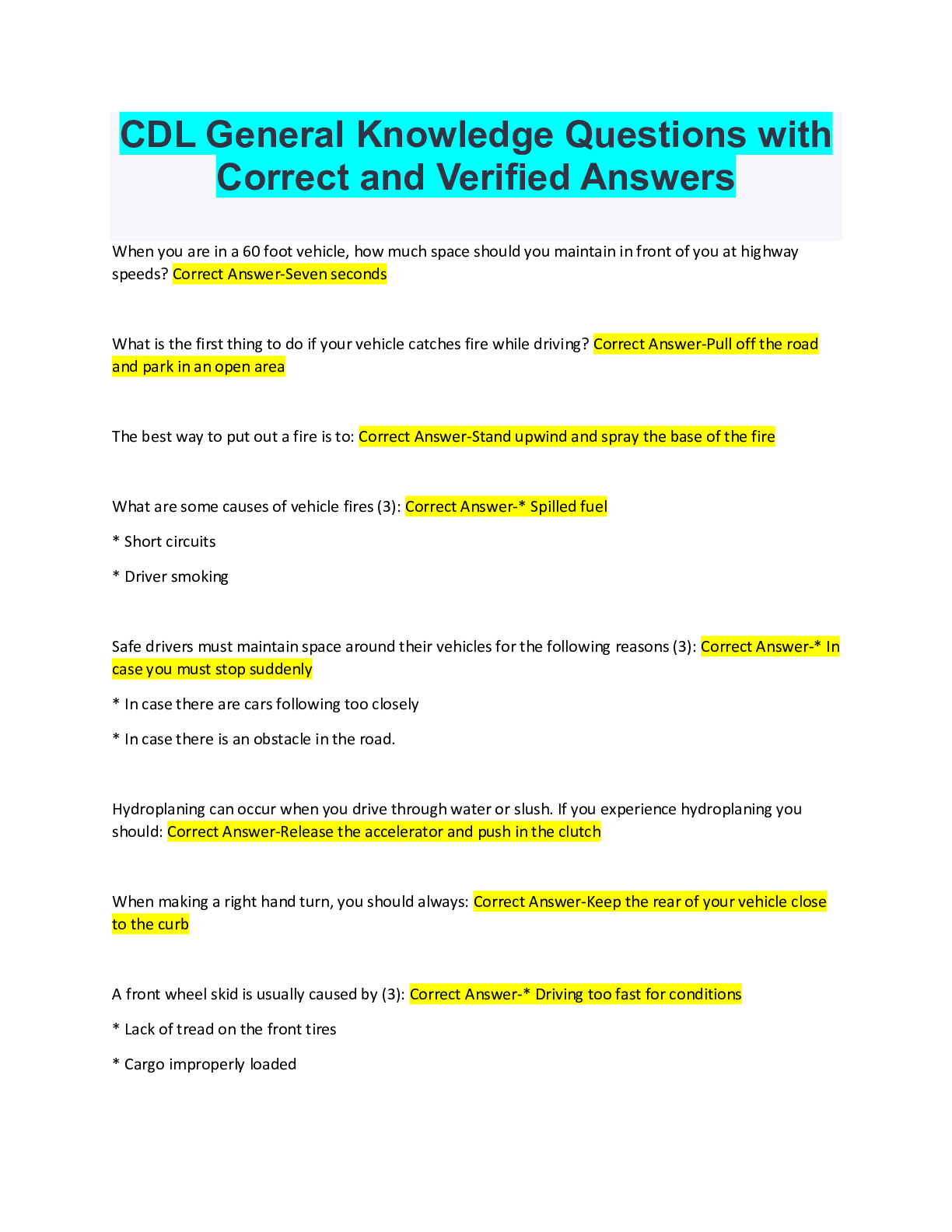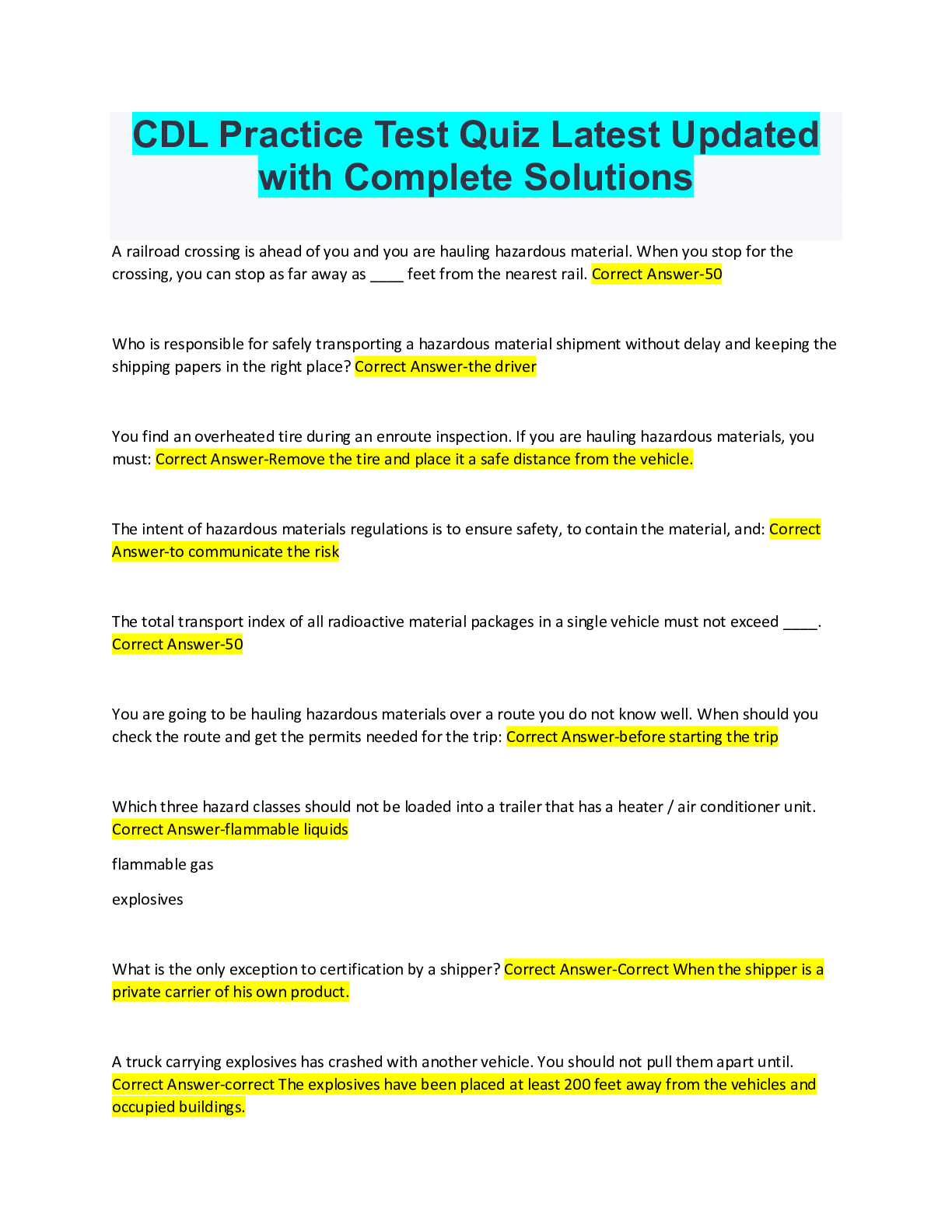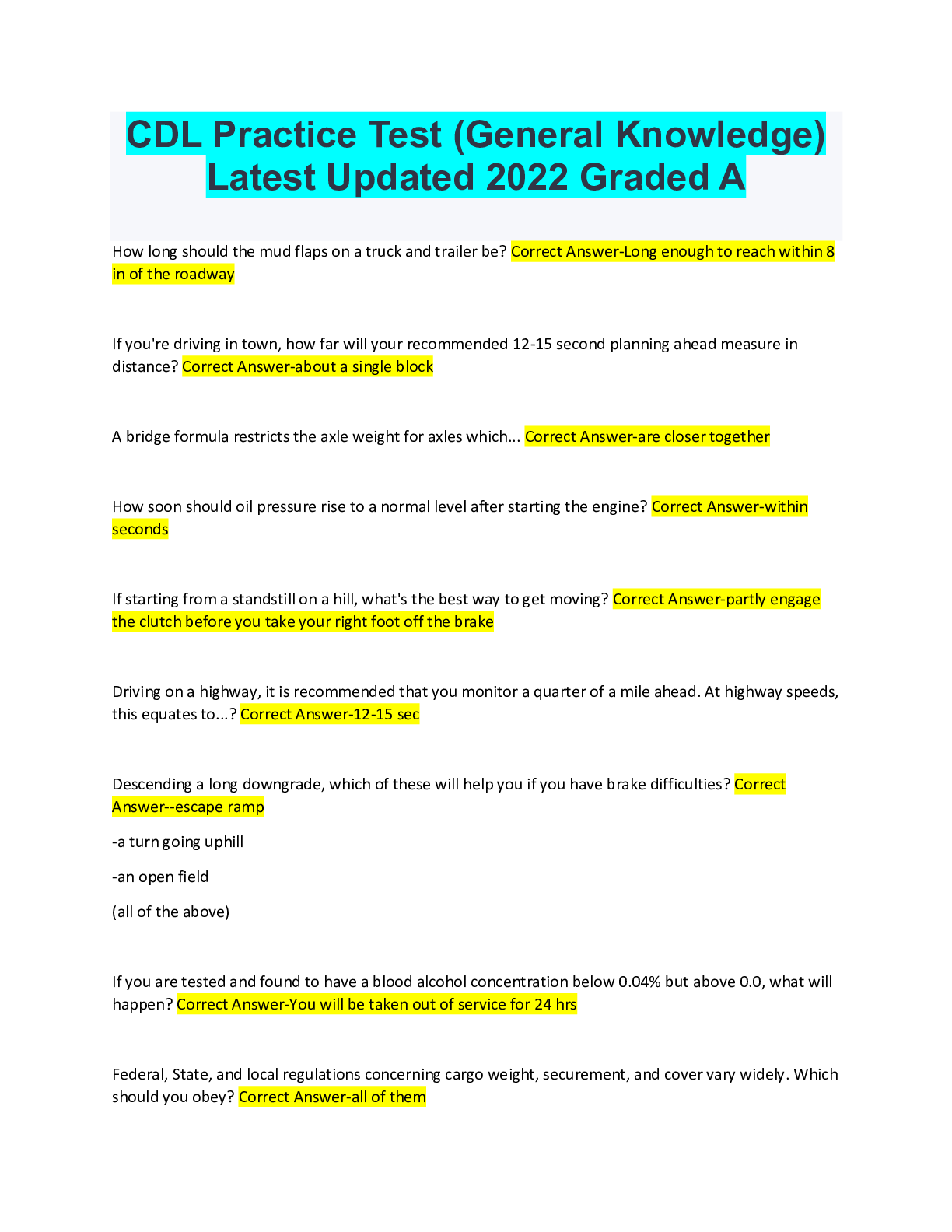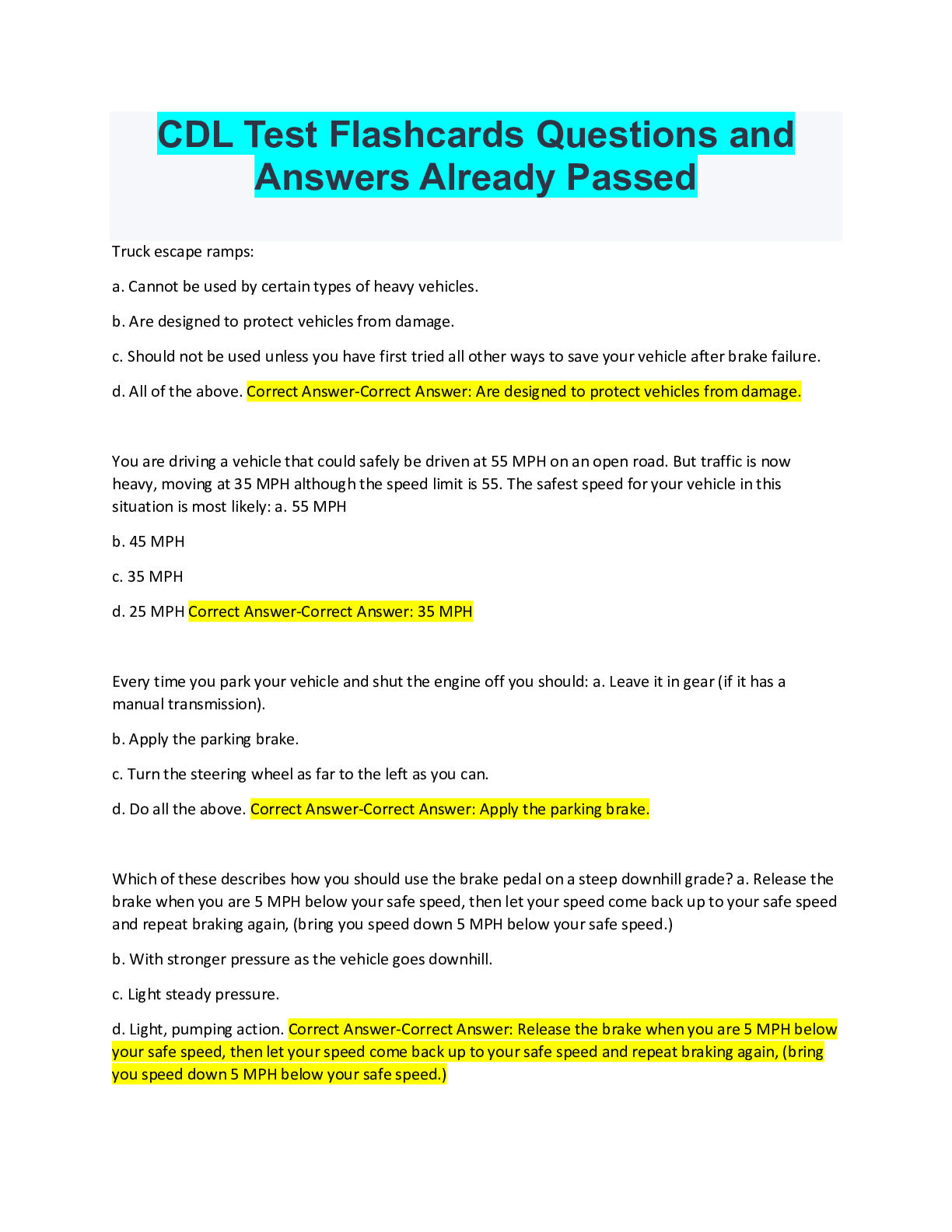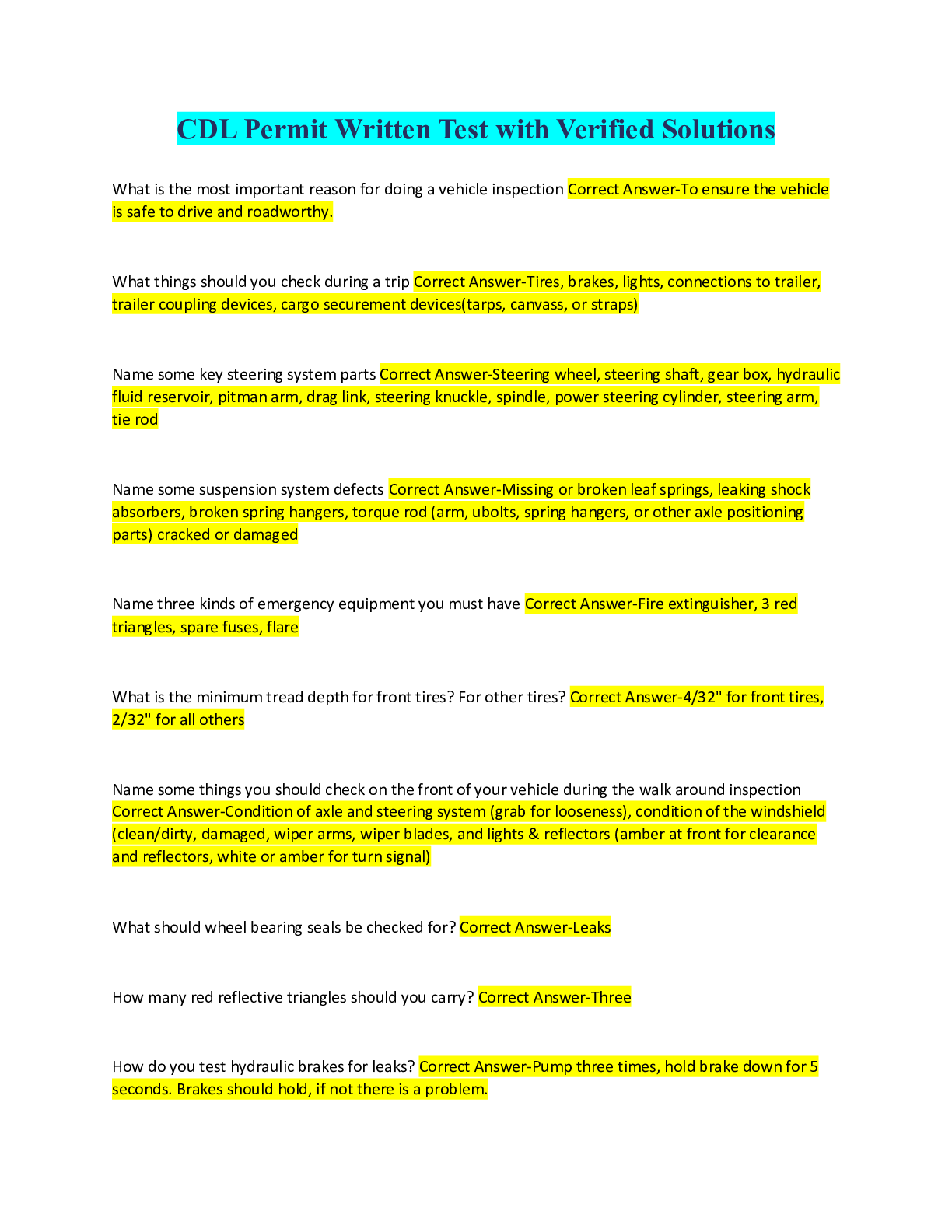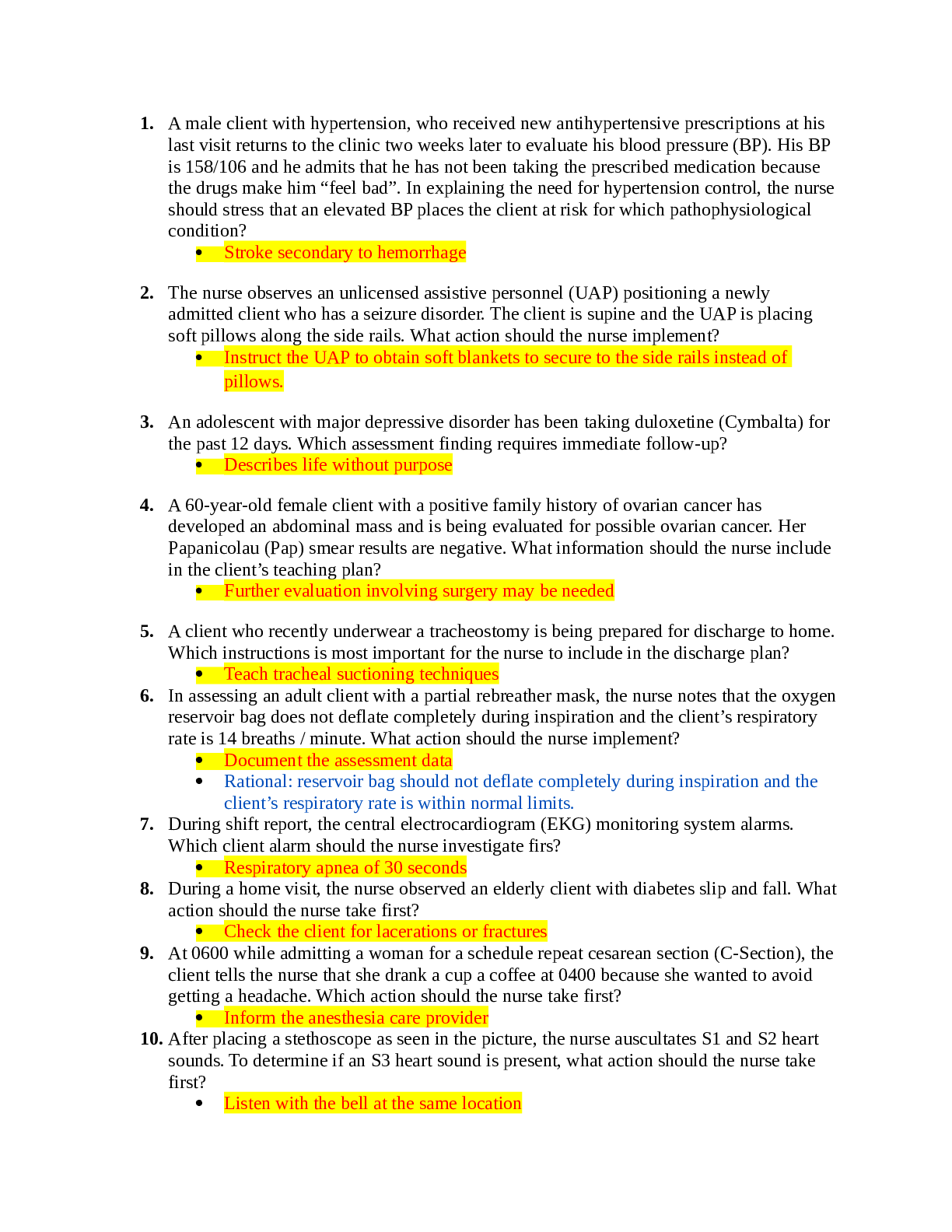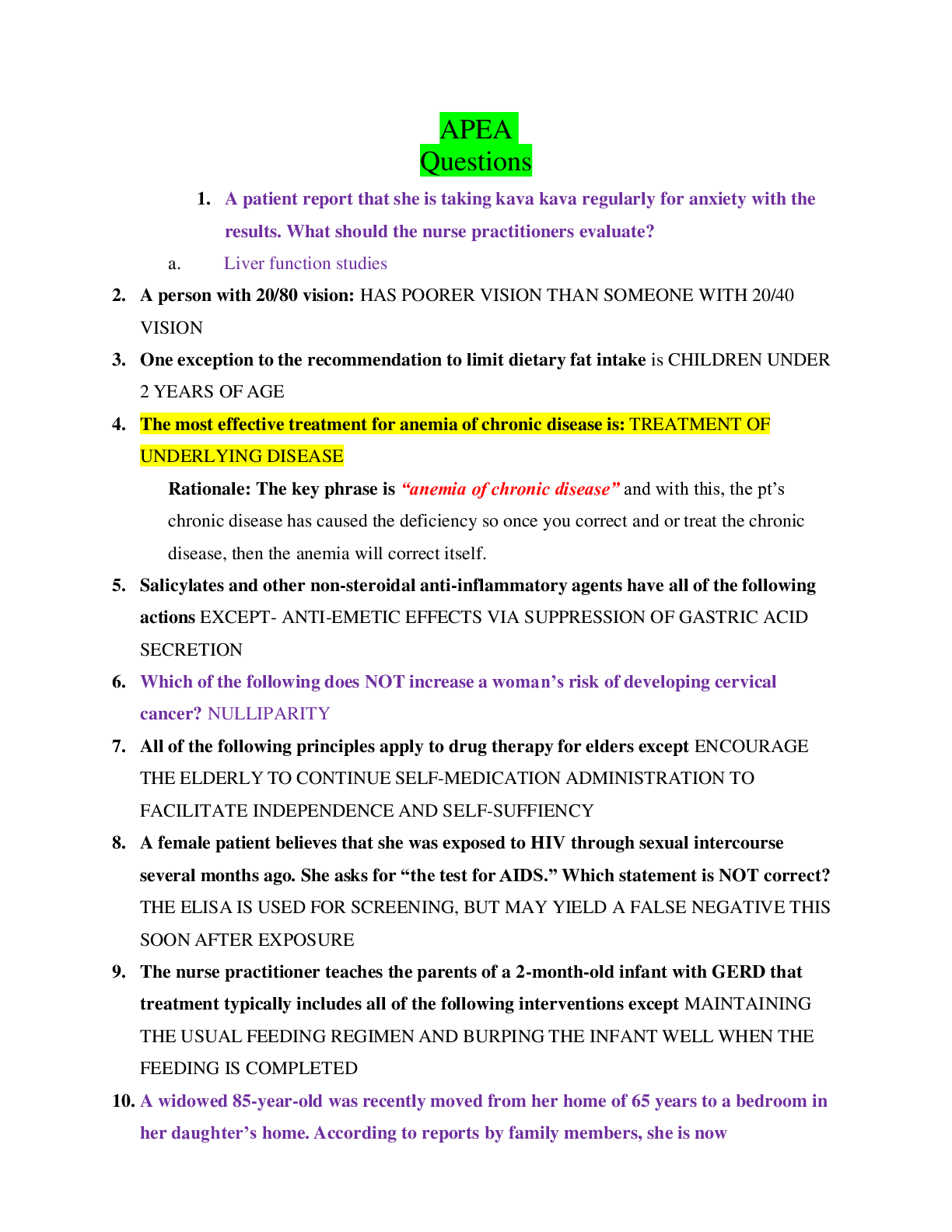Information Technology > QUESTIONS & ANSWERS > Systems Analysis and Design, Tenth Edition End of Chapter Solutions. PART C Financial Analysis Tools (All)
Systems Analysis and Design, Tenth Edition End of Chapter Solutions. PART C Financial Analysis Tools
Document Content and Description Below
IT 510 Systems Analysis and Design, Tenth Edition End of Chapter Solutions. PART C Financial Analysis Tools Toolkit Exercises s Questions 1. How do you know if a project is economically feasible?... Why is TCO important? A project is economically feasible if the future benefits outweigh the estimated costs of developing or acquiring the new system. A systems analyst determines economic feasibility by calculating a project’s costs and benefits. The analyst then uses various tools and techniques to perform a cost-benefit analysis, which often is called a feasibility study. A project’s total cost of ownership (TCO) includes ongoing support and maintenance costs, as well as acquisition costs. It is important to stress that after-acquisition costs are substantial, and often are under-estimated. For example, HP found that the majority of total IT costs occur after the purchase, and that nearly half the costs lie outside the IT department’s budget. HP also noted that the most significant cost factor is user support, including peer-to-peer assistance that rarely is documented or measured. (Page 602) 2. Describe each cost classification and include two examples. Costs can be classified as tangible or intangible, direct or indirect, fixed or variable, and developmental or operational. Tangible costs have a specific dollar value. Examples of tangible costs include employee salaries and hardware. Intangible costs have a dollar value that cannot be calculated easily. Examples of intangible costs include customer dissatisfaction and reduced information availability. If an analyst examines an intangible cost carefully, it might be possible to estimate a dollar value. Direct costs are costs associated with the development of a specific system. Examples of direct costs include the salaries of project team members who develop the new system. In contrast, indirect costs, such as the monthly rental for a copy machine or insurance expense, cannot be attributed to the development of a particular system. Indirect costs also are called overhead expenses. Fixed costs are relatively constant and do not depend on a level of activity or effort. Fixed costs might include salaries and hardware rental charges. Variable costs, such as the costs of printer paper and supplies, depend on a level of activity. Developmental costs are incurred when the system first is developed or acquired, such as salaries. Operational costs are incurred after the system is implemented and continue while the system is in use. Examples include system maintenance, ongoing training, and annual software license fees. Costs can fall into more than one category. For example, overtime pay for clerical help during the systems analysis phase might be developmental, variable, and direct. A monthly fee for maintaining the company’s Web site might be operational, fixed, and indirect. (Pages 603-604) 3. What are four chargeback methods? In your view, is one more “fair” than another? A chargeback method is a method of allocating the indirect costs of running the IT department. Most organizations adopt one of four chargeback approaches: no charge; fixed charge; variable charge based on resource usage; or variable charge based on volume. a. The no charge approach treats IT department services as a necessary cost of doing business that benefits the entire company, rather than a particular department. b. The fixed charge method divides indirect IT costs among all the other departments in the form of a fixed monthly charge. c. The method called variable charge based on resource usage assigns costs based on the resources used by an information system. Resources might include CPU time, printer use, or a combination of similar factors. With a variable charge based on volume approach, the indirect IT department costs are allocated to other departments based on user-oriented activity, such as the number of transactions. There is no single answer to the second part of the question, regarding what is “fair.” Student answers might depend on their own business experience (or lack of it). In any case, the reasoning is the important thing, and whether the student has a grasp of the differences. (Page 604) 4. Describe each benefit classification, and include two examples. Benefits are classified the same way as costs — tangible or intangible, fixed or variable, and direct or indirect — and the same examples would apply. For instance, costs can include salaries, equipment, and other resources, and a reduction in these areas can be calculated as a benefit. Benefits also can be classified as positive benefits or costavoidance benefits. Positive benefits are increased revenues, lower costs, or improved services that can be attributed to the new information system. Examples of positive benefits include reduced operating expenses, faster service to customers, and better inventory management. Cost-avoidance benefits are expenses that would be necessary if the new system were not installed. Examples of cost-avoidance benefits include handling the work with current staff instead of hiring more people, or not having to replace existing hardware and software. (Page 605) 5. What formula do you use to calculate the payback period? Payback analysis compares the cumulative costs and benefits of a proposed information system to determine how long it will take for the system to pay for itself. This period of time is called the payback period. Cumulative costs include developmental and operational expenses, and benefits include all tangible benefits. A payback period is the time it takes for the accumulated benefits of an information system to equal the accumulated costs of developing and operating the system. You can use [Show More]
Last updated: 1 year ago
Preview 1 out of 9 pages
.png)
Reviews( 0 )
Document information
Connected school, study & course
About the document
Uploaded On
Aug 22, 2022
Number of pages
9
Written in
Additional information
This document has been written for:
Uploaded
Aug 22, 2022
Downloads
0
Views
66
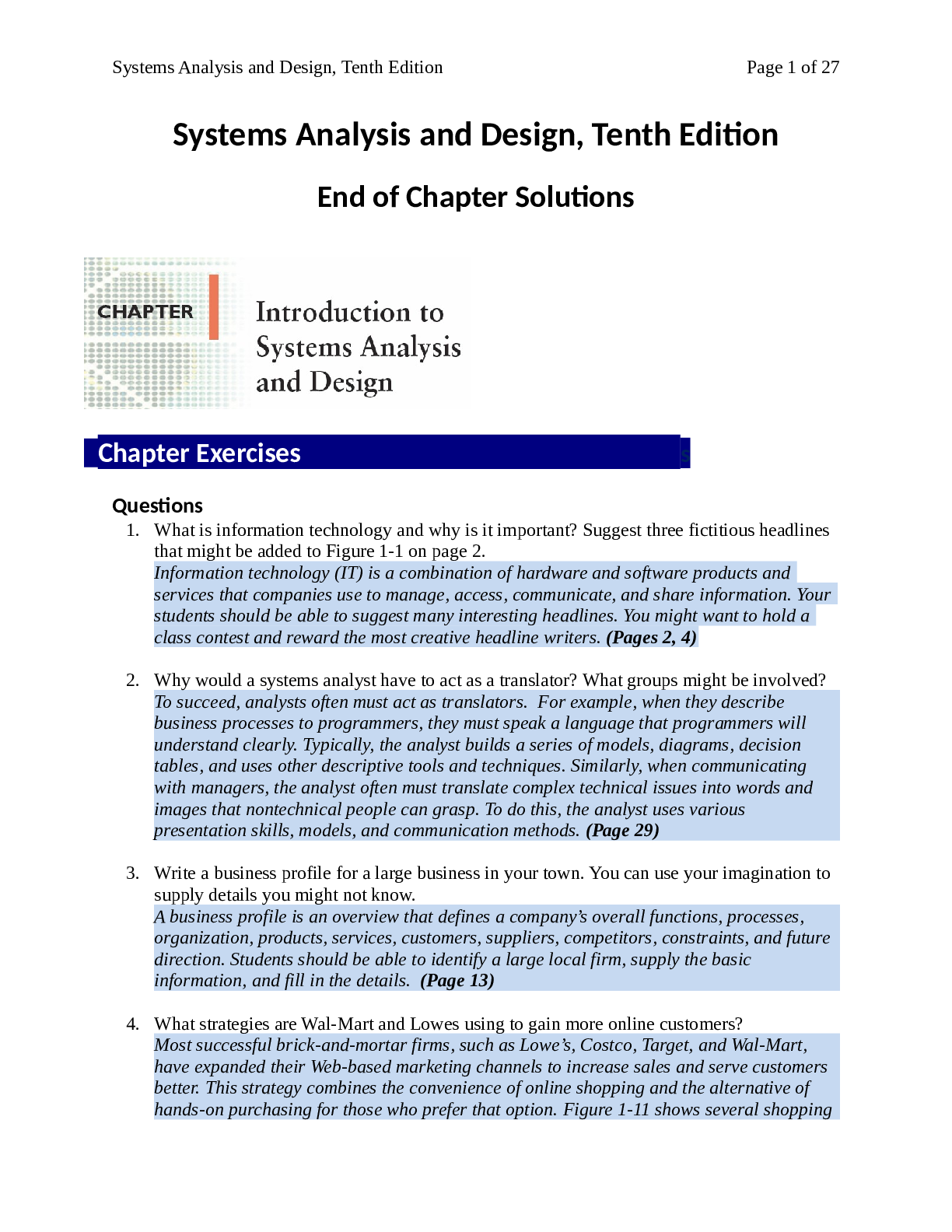













.png)
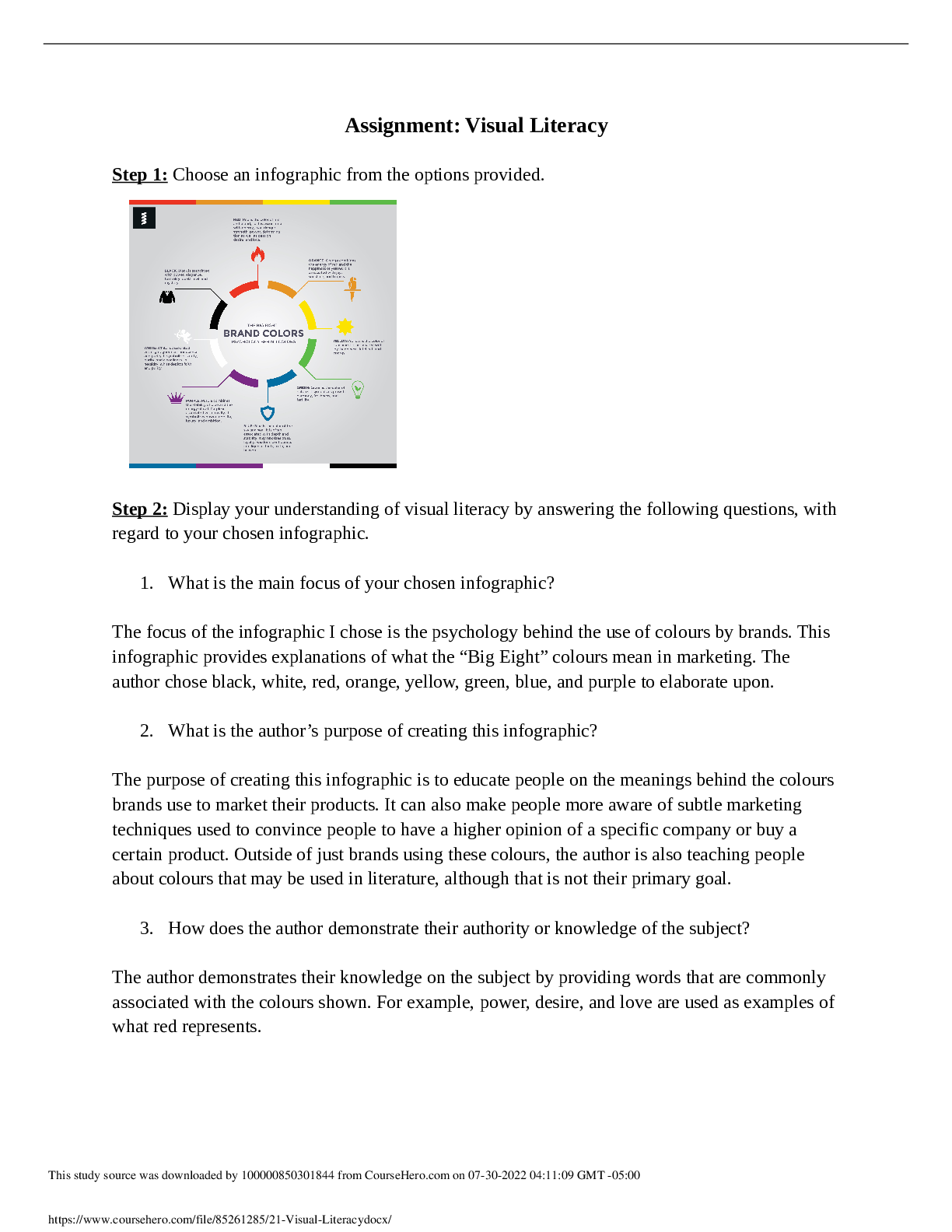


.png)
.png)
.png)
.png)
.png)

